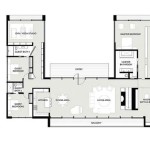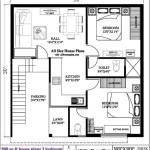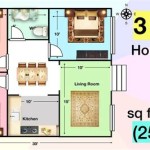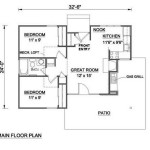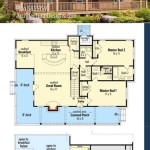Designing A House Floor Plan
For an exciting and daunting task, designing a house floor plan is a creative process that can bring your dream home to life. Whether you are building a new home from scratch or renovating an existing one, a well-thought-out floor plan is the foundation for a functional, comfortable, and aesthetically pleasing living space. Here are the key factors to consider when designing a house floor plan:
1. Determine Your Needs and Lifestyle
The first step in designing a floor plan is to assess your current and future needs. Consider the number of bedrooms and bathrooms you require, as well as the type of living spaces you prefer. Do you need a formal dining room, a home office, or a dedicated playroom for children? Think about how you and your family live and use your spaces, and design a floor plan that accommodates those activities.
2. Consider the Flow of the Home
A well-designed floor plan allows for a smooth and natural flow between rooms. The kitchen, dining room, and living room should be conveniently connected, while private areas such as bedrooms and bathrooms should offer privacy and seclusion. Avoid creating long, narrow hallways or awkward dead-end spaces. Aim for an open and inviting layout that promotes easy movement and interaction.
3. Maximize Natural Light
Natural light can significantly enhance the livability and ambiance of your home. Position windows and doors strategically to allow ample sunlight to enter the living areas. Consider the orientation of your home and the path of the sun throughout the day to optimize natural lighting. Large windows and skylights can bring the outdoors in and create a brighter, more cheerful atmosphere.
4. Plan for Storage and Space Utilization
Efficient storage solutions are essential for keeping your home organized and clutter-free. Incorporate built-in closets, drawers, and shelves wherever possible. Consider adding a mudroom or pantry to store seasonal items and keep frequently used items out of sight. Utilize vertical space with tall bookshelves and cabinets, and make use of under-utilized areas such as beneath stairs or in awkward corners.
5. Consider Energy Efficiency and Sustainability
Designing an energy-efficient floor plan can save you money on utility bills and reduce your environmental footprint. Orient your home to take advantage of natural cooling and heating. Use energy-efficient appliances and lighting systems. Consider incorporating renewable energy sources such as solar panels or geothermal heating. By designing a sustainable floor plan, you can create a healthier and more environmentally responsible living environment.
6. Seek Professional Advice
If you are unsure about any aspect of designing a house floor plan, do not hesitate to consult with a professional architect or designer. They can provide valuable insights, expertise, and guidance to help you create a floor plan that meets your needs and aspirations. Their experience and knowledge can save you time, money, and potential headaches in the long run.
Conclusion
Designing a house floor plan is a complex but rewarding process that requires careful planning and consideration. By following these tips and seeking professional advice when needed, you can create a floor plan that perfectly suits your lifestyle, maximizes space utilization, and enhances the overall functionality and beauty of your dream home.

House Plans How To Design Your Home Plan

House Plans How To Design Your Home Plan

Floor Plan Creator And Designer Free Easy App

Floor Plans Types Symbols Examples

Floor Plan Creator And Designer Free Easy App

House Plans How To Design Your Home Plan

Creating The Perfect Floor Plan Quarry View Building Group

Floor Plans How To Design The Perfect Layout Cherished Bliss

House Plans How To Design Your Home Plan

Where You Can Buy House Plans Live Home 3d


